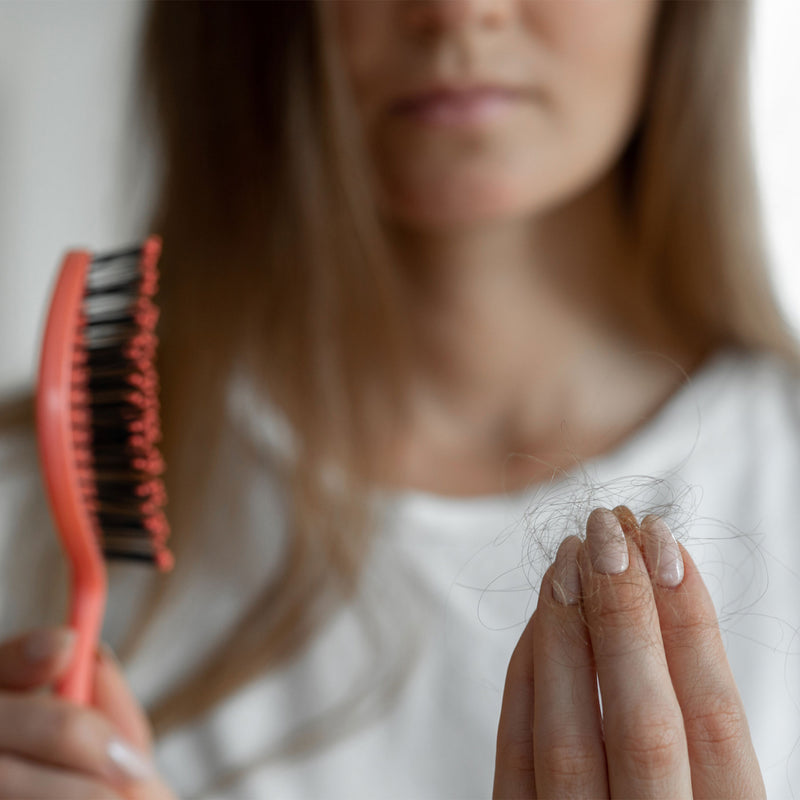
Hair Loss Awareness Month - August
It is important to understand the underlying reason for your hair loss to build a plan to slow, halt or even reverse hair loss and set expectations for success.
Non-Hormonal Formulas | FREE Shipping on Orders over $29
Powerful Formulas without the Chemicals
See volume in as soon as 60 days and keep it
Get your order fast. Free on orders over $29
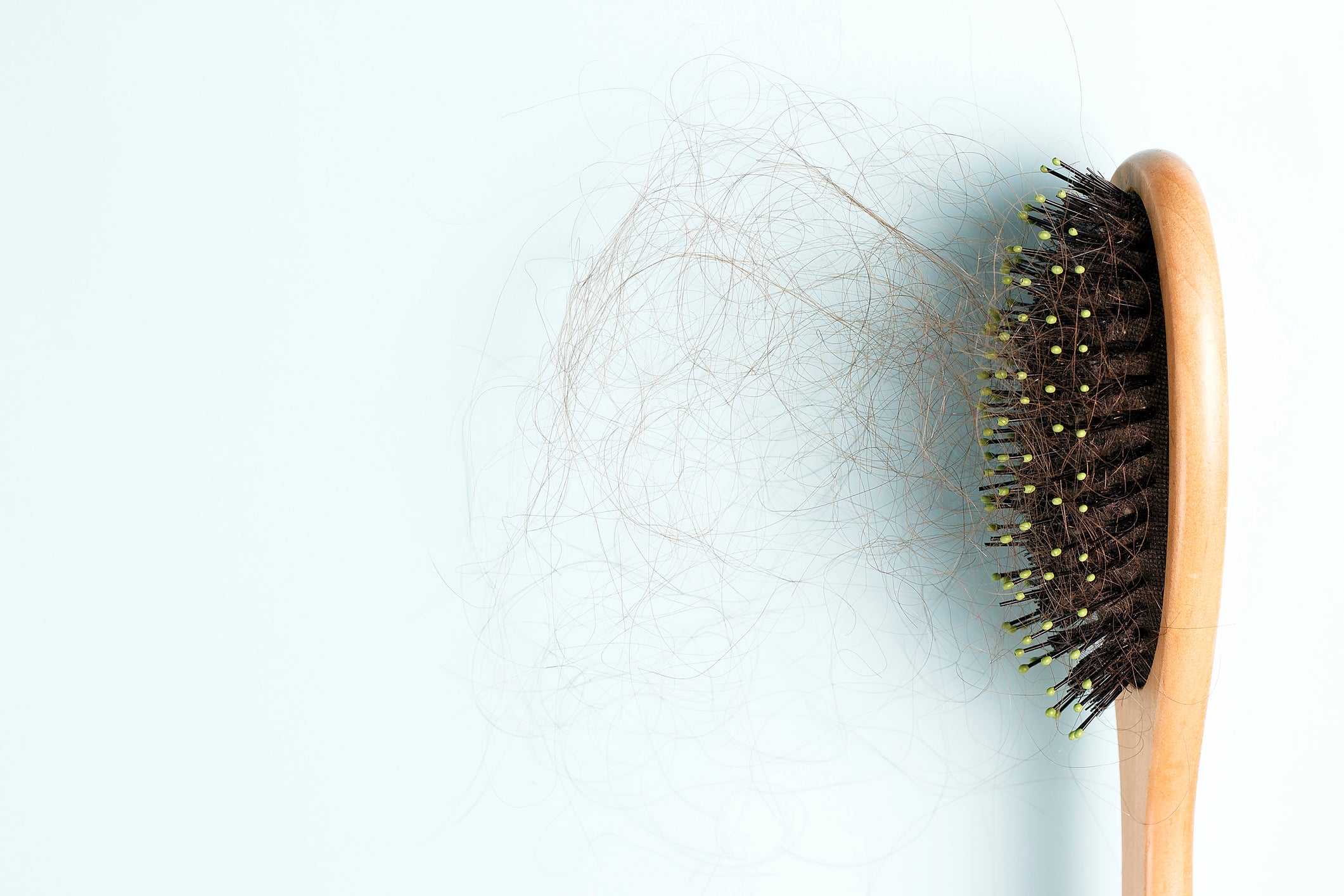
Learn more about hair loss to empower
Hair loss is frustrating for both men and women. Our hair is a statement of who we are and when our hair becomes thinner and we lose density, it can have an enormous impact on our phycological well being.
The underlying cause for hair loss, regardless of gender, is now believed to be the amount of DHT binding to receptors in the hair follicle ultimately shrinking them and causing thinner hair and eventually loss.
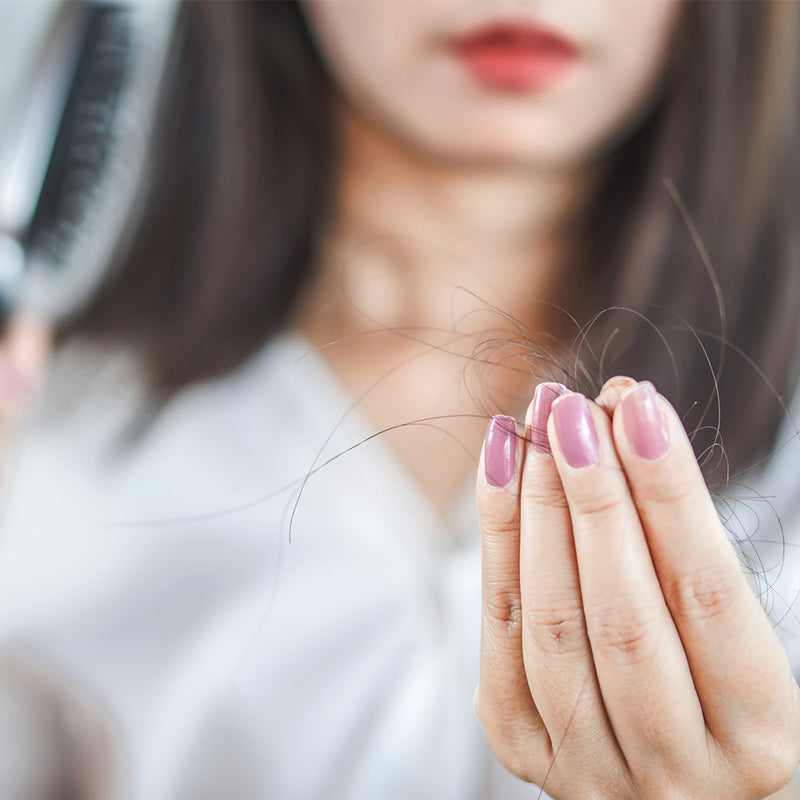
Although all causes of basic hair loss are not fully understood, there are several factors that have proven to contribute to the eventual loss of hair follicles.
Genetic
Hormonal Changes or Imbalances
Improper Nutrition
Disease (Diabetes, Lupus, etc.)
Medications
Seasonal Changes
Photo Aging
Hair loss can be permanent or temporary, as well.
The most common reason is a surplus of DHT (dihydrotestosterone) in the scalp. Although most often testosterone is associated with men, DHT is present in men and women.
Anagen
Roughly 70-85% of the hair on your head is in the Anagen phase of it's life cycle. This is when the hair is actively growing and it lasts from 2-6 years.
Catagen
When your hair is in the Catagen phase, it is done growing and moving into position near the top of the skin layer in preparation for a new hair follicle to grow in its spot. Roughly 1-2% of the hair on your head is in this phase and it lasts from 2-3 weeks.
Telogen
The final phase is Telogen phase or resting phase, which lasts for 100 days or so. The remaining hair on your head is in this phase and eventually falls out when the new hair beneath it pushes it out or it is forced out by an activity like brushing, showering or anything else that would put pressure on the hair.*
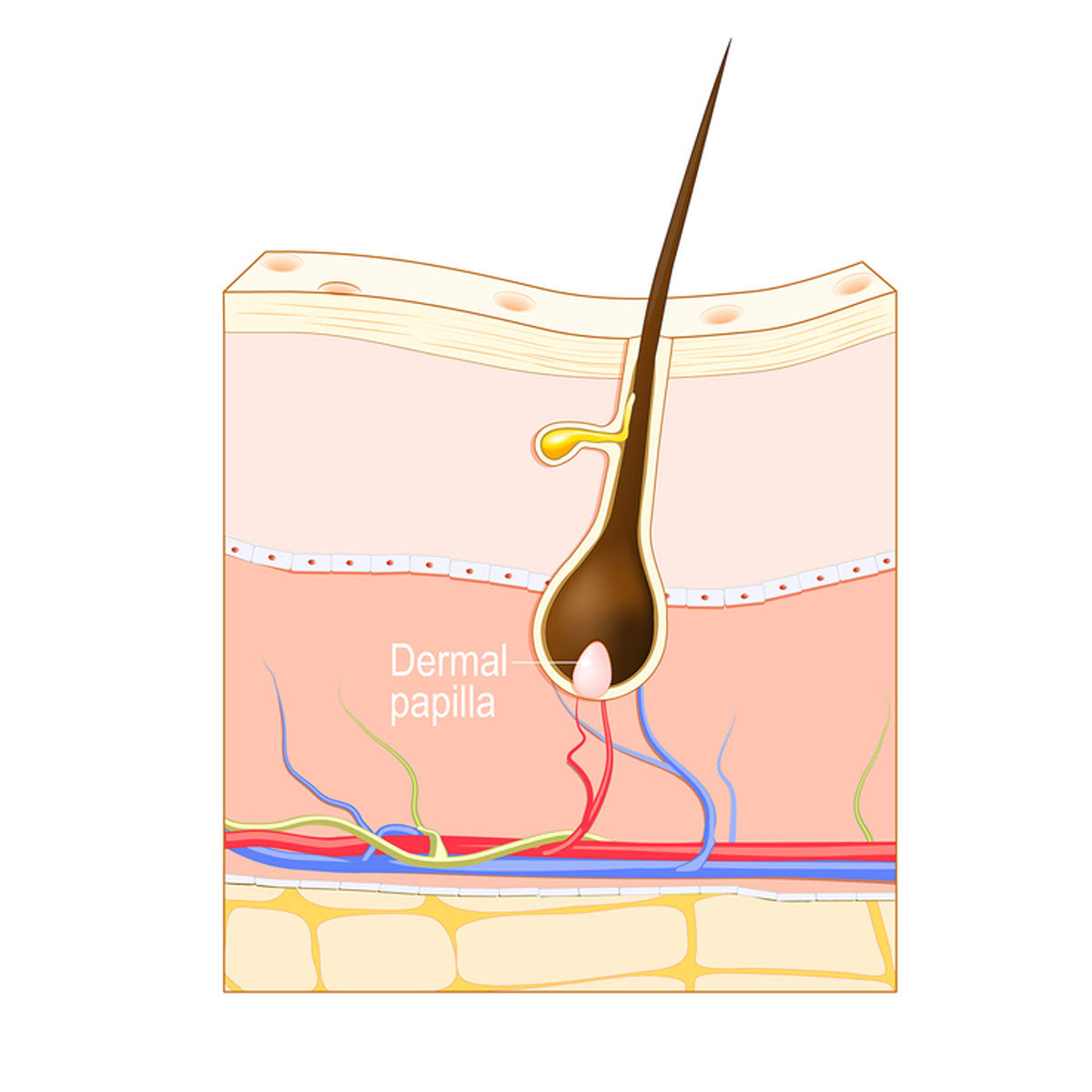


Anagen Phase
expand_moreRoughly 70-85% of the hair on your head is in the Anagen phase of it's life cycle. This is when the hair is actively growing and it lasts from 2-6 years.

Catagen Phase
expand_moreWhen your hair is in the Catagen phase, it is done growing and moving into position near the top of the skin layer in preparation for a new hair follicle to grow in its spot. Roughly 1-2% of the hair on your head is in this phase and it lasts from 2-3 weeks.
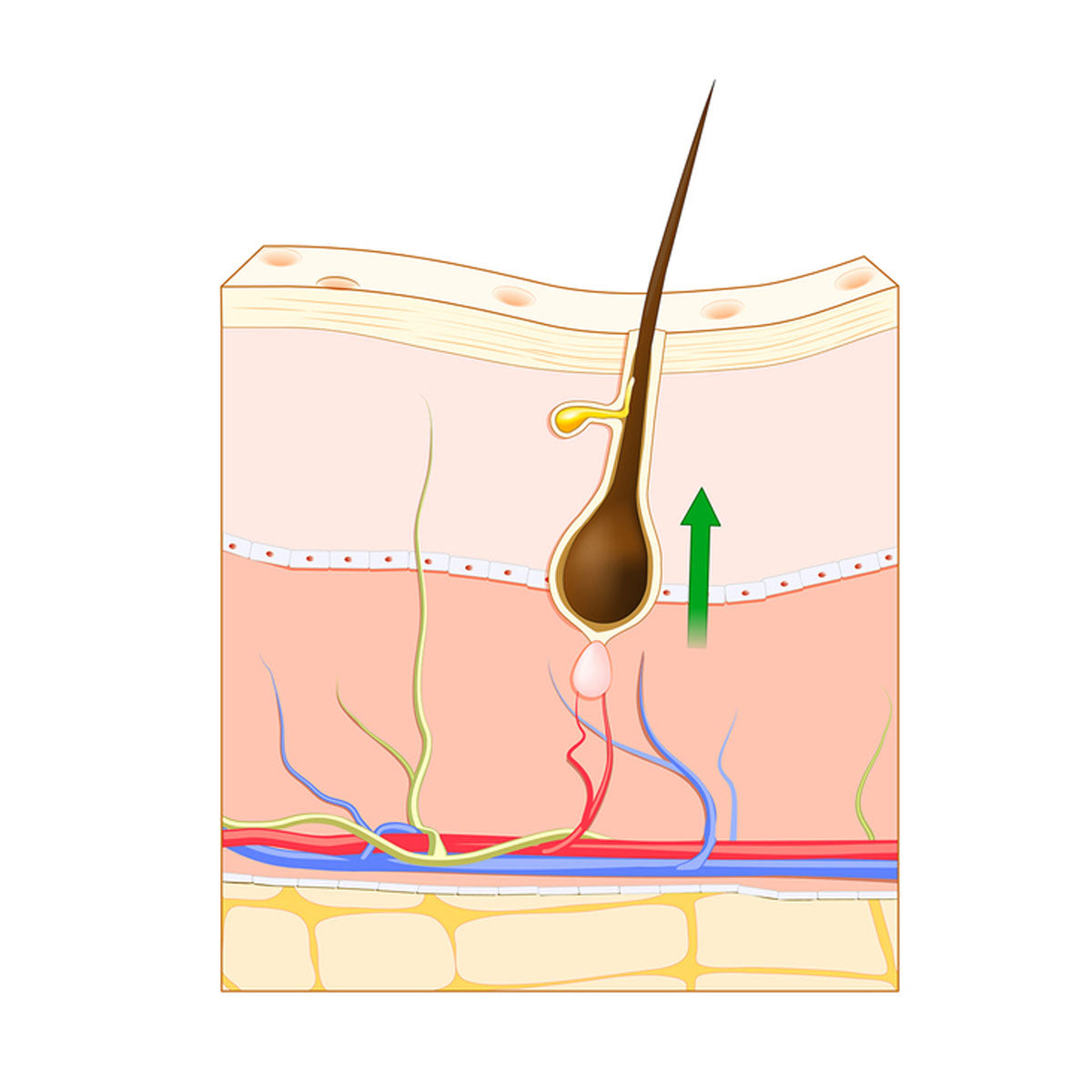
Telogen Phase
expand_moreThe final phase is Telogen phase or resting phase, which lasts for 100 days or so. The remaining hair on your head is in this phase and eventually falls out when the new hair beneath it pushes it out or it is forced out by an activity like brushing, showering or anything else that would put pressure on the hair.*
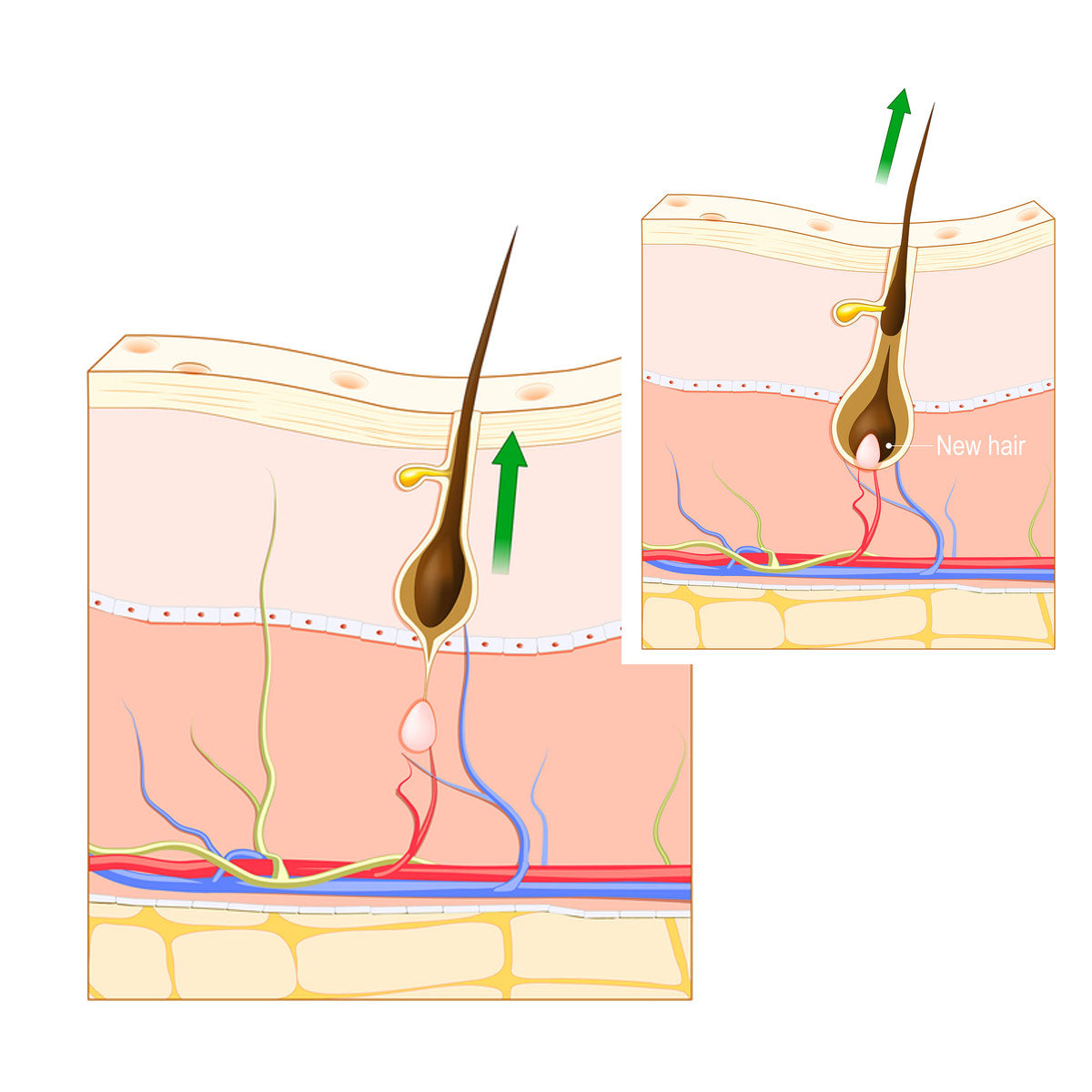

Eventually over time, the hair cycle will begin to change. The growth phase of hair (Anagen) will begin to shorten.
When this phase shortens, hair can become thinner and more brittle. One of the main underlying causes is increased DHT, which attacks the hair follicle and limits the growth cycle in many ways.
By blocking DHT, the hair's growth cycle can remain full and hair will be thick, strong and grow to its fullest potential.

Eventually over time, the hair cycle will begin to change. The growth phase of hair (Anagen) will begin to shorten.
When this phase shortens, hair can become thinner and more brittle. One of the main underlying causes is increased DHT, which attacks the hair follicle and limits the growth cycle in many ways.
By blocking DHT, the hair's growth cycle can remain full and hair will be thick, strong and grow to its fullest potential.


Stop hair loss and grow more hair for less than $1/day. Guaranteed results or your money back.